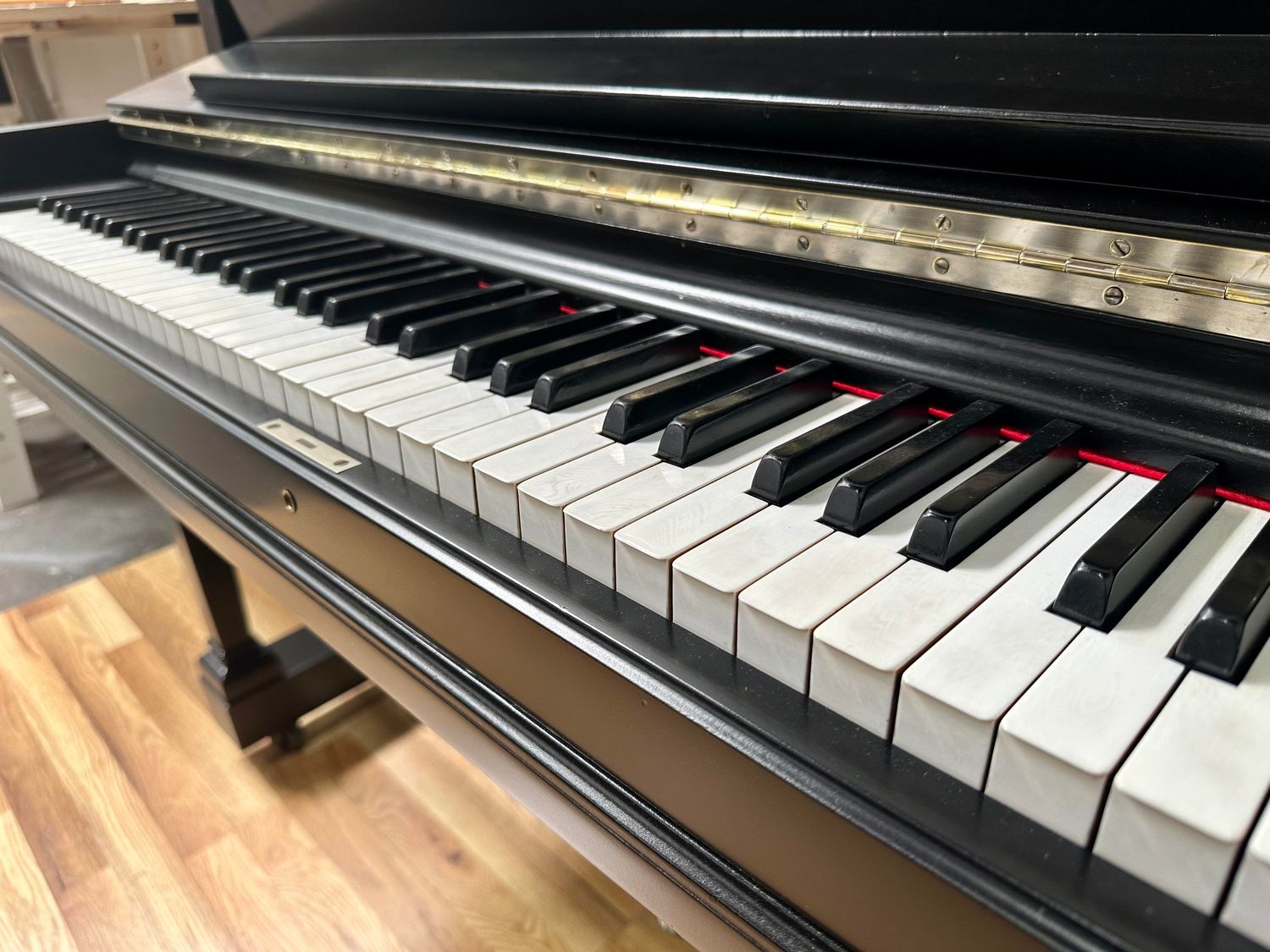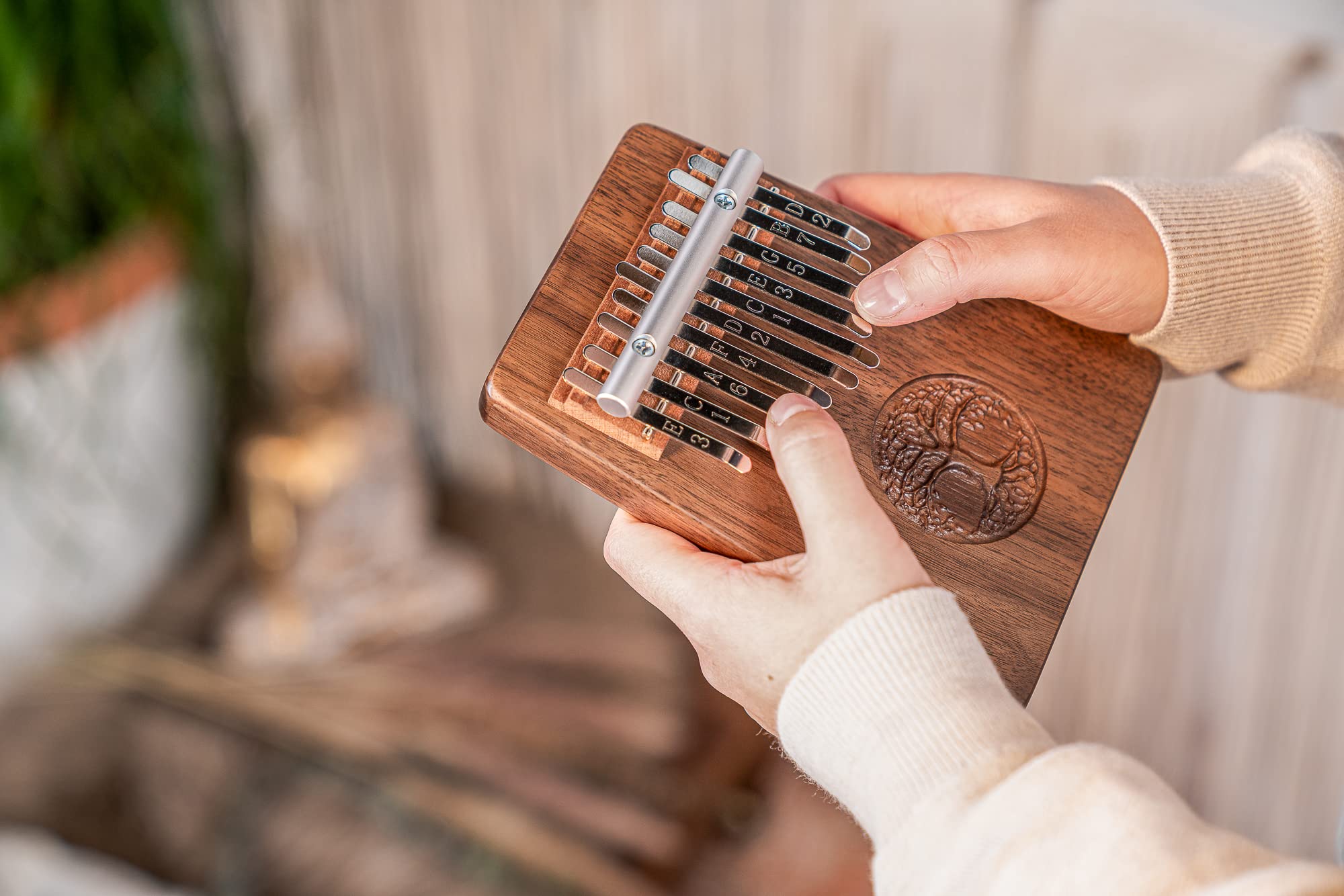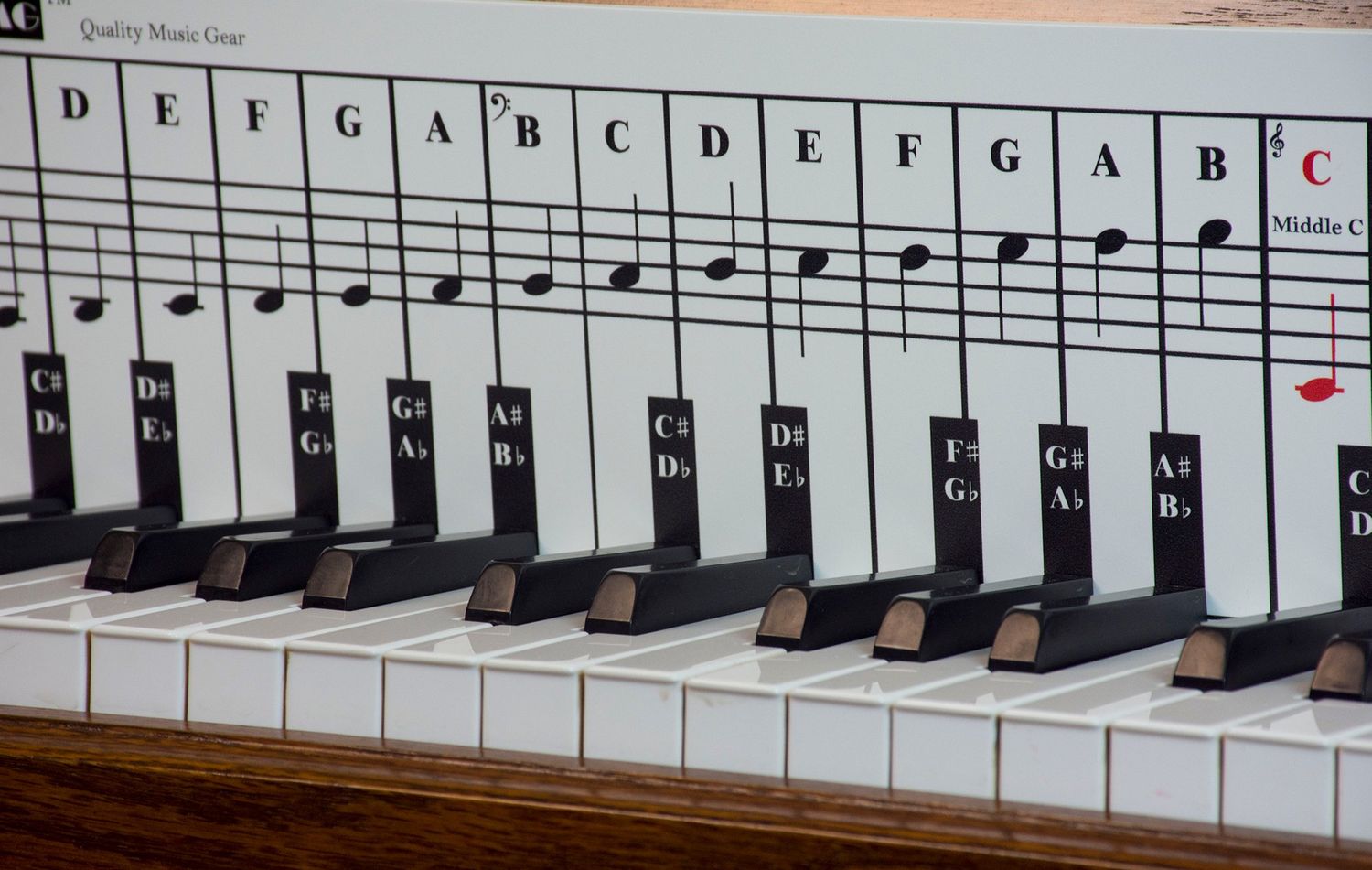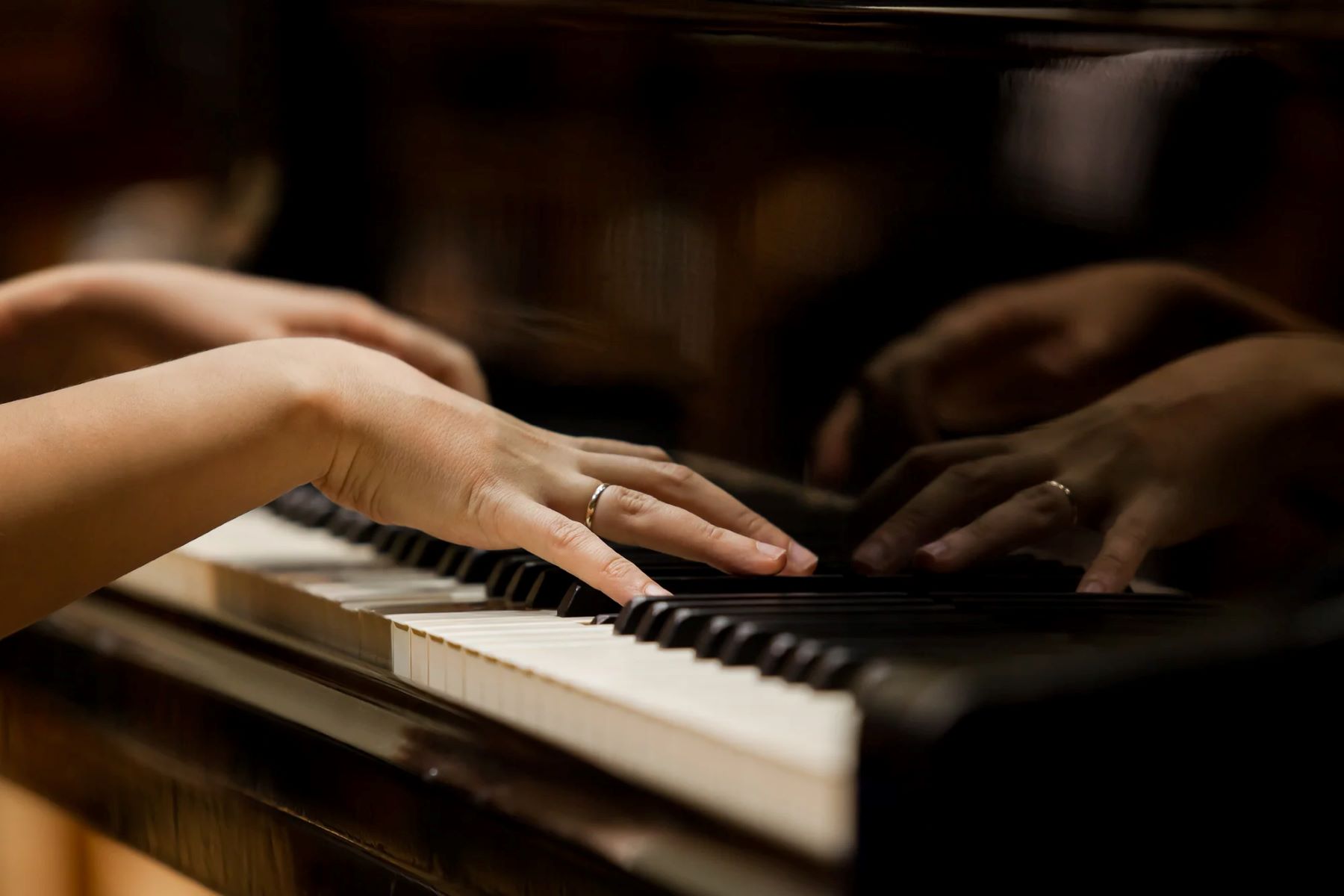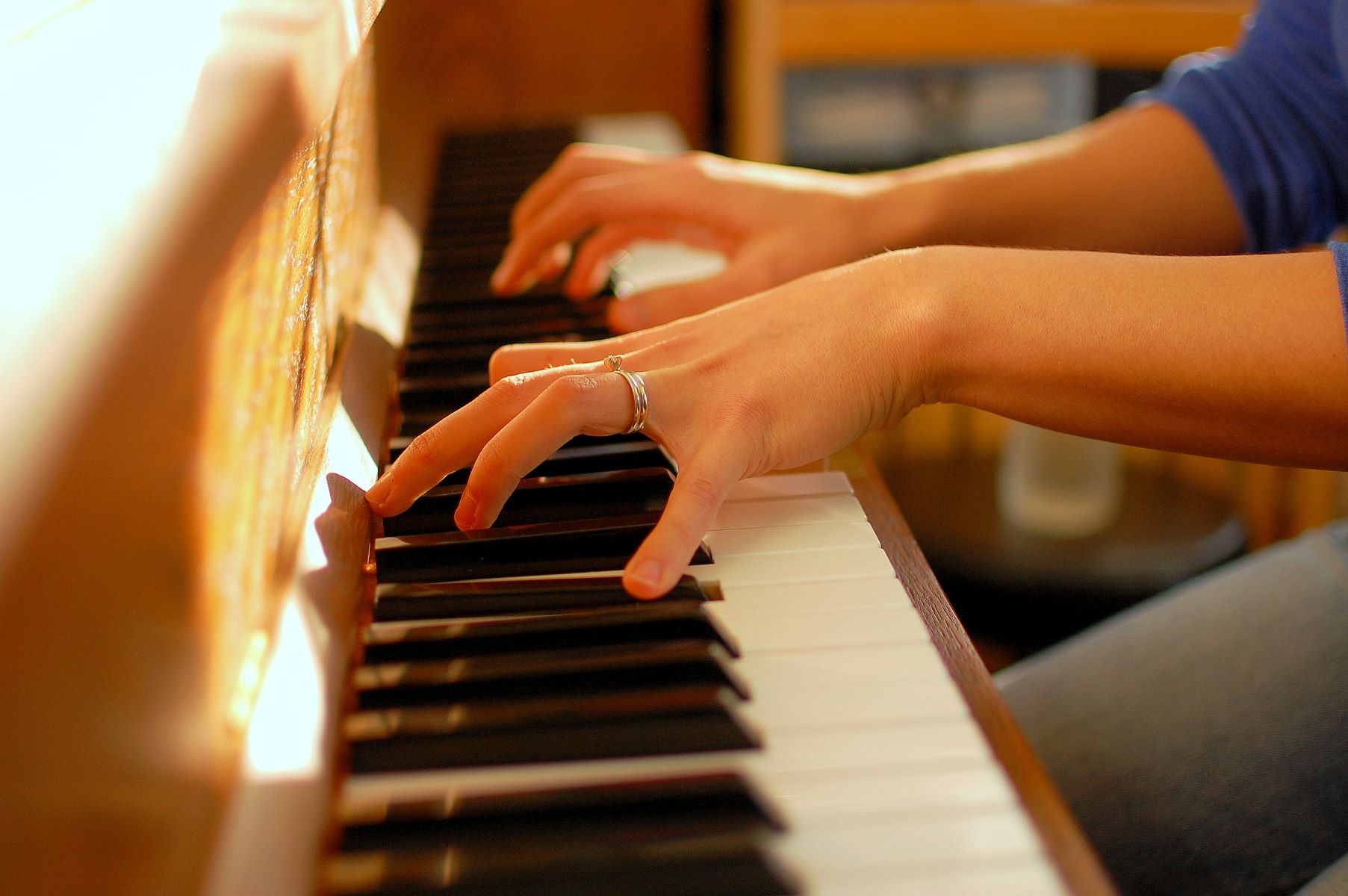Home>Instruments>Piano>How To Play “Bella’s Lullaby” On Piano


Piano
How To Play “Bella’s Lullaby” On Piano
Published: February 10, 2024
Learn how to play "Bella's Lullaby" on piano with step-by-step instructions. Master the beautiful melody and impress your audience. Perfect for piano enthusiasts!
(Many of the links in this article redirect to a specific reviewed product. Your purchase of these products through affiliate links helps to generate commission for AudioLover.com, at no extra cost. Learn more)
Table of Contents
Introduction
Playing the piano is a fulfilling and enchanting experience that allows individuals to express their creativity and emotions through music. One of the most beloved and iconic pieces in the piano repertoire is "Bella's Lullaby" from the renowned movie "Twilight." Composed by Carter Burwell, this hauntingly beautiful melody has captivated audiences around the world with its evocative and tender notes. In this comprehensive guide, we will delve into the intricacies of playing "Bella's Lullaby" on the piano, breaking down the composition into manageable steps for pianists of all levels.
Whether you are a beginner eager to learn this enchanting piece or an experienced player seeking to refine your skills, this guide will provide valuable insights and techniques to help you master "Bella's Lullaby" with confidence and finesse. By understanding the sheet music, honing your left and right-hand techniques, and integrating practice tips, you will embark on a rewarding musical journey that culminates in the mastery of this timeless piano composition.
As we embark on this musical adventure, it's important to approach the learning process with patience, dedication, and a deep appreciation for the art of piano playing. "Bella's Lullaby" holds a special place in the hearts of many music enthusiasts, and by learning to play this piece, you will not only enhance your piano skills but also immerse yourself in the captivating world of musical storytelling. So, let's embark on this melodic journey and unravel the enchanting nuances of "Bella's Lullaby" on the piano.
Getting Started
Before delving into the intricacies of playing "Bella's Lullaby" on the piano, it’s essential to create an optimal learning environment and mindset. Here are the initial steps to set the stage for your musical journey:
- Set Up Your Piano: Ensure that your piano or keyboard is comfortably positioned in a well-lit and quiet space. Proper posture and hand positioning are crucial, so sit at the center of the keyboard with your back straight and wrists slightly elevated.
- Acquaint Yourself with the Melody: Listen to different renditions of "Bella's Lullaby" to familiarize yourself with the enchanting melody. Pay attention to the nuances of expression and dynamics in each performance, allowing the emotional essence of the piece to resonate with you.
- Access the Sheet Music: Obtain the official sheet music for "Bella's Lullaby" to gain a comprehensive understanding of the composition. Whether in physical or digital format, having the sheet music at your disposal is essential for learning the piece accurately.
By laying the groundwork with these initial steps, you will create a conducive environment for effective practice and musical immersion. With your piano ready and the melody resonating in your mind, you are poised to embark on the next stages of mastering "Bella's Lullaby" on the piano.
Understanding the Sheet Music
Sheet music serves as the musical roadmap that guides pianists through the intricacies of a composition. When delving into the sheet music for "Bella's Lullaby," it’s essential to grasp the fundamental elements that constitute the piece. Here’s how you can navigate and comprehend the sheet music effectively:
- Identify the Key Signature and Time Signature: The key signature indicates the tonal center of the piece, while the time signature denotes the rhythmic structure. For "Bella's Lullaby," the key signature is E-flat major, signifying the predominance of E-flat and related notes, and the time signature is 4/4, indicating four beats per measure.
- Study the Notation and Dynamics: Familiarize yourself with the notation symbols, including note durations, rests, and dynamic markings. Pay close attention to the dynamic indications such as pianissimo (very soft) and crescendo (gradually increasing volume), as they contribute to the expressive interpretation of the piece.
- Analyze the Phrasing and Articulation: Explore the phrasing and articulation markings to understand how individual notes and passages are connected and articulated. Legato markings indicate smooth and connected playing, while staccato markings denote short and detached notes, adding depth to the musical expression.
- Embrace the Expressive Markings: Delve into the expressive markings such as dolce (sweetly) and espressivo (expressively) to imbue the performance with emotive qualities. These markings provide guidance on infusing the music with tenderness and sensitivity, reflecting the lullaby’s poignant essence.
By immersing yourself in the intricacies of the sheet music, you will gain a deeper appreciation for the composition’s structure and expressive nuances. Understanding the key and time signatures, notation, dynamics, phrasing, and expressive markings will pave the way for a more informed and emotive interpretation of "Bella's Lullaby" on the piano.
Learning the Left Hand
The left hand plays a foundational role in bringing the rich harmonies and gentle rhythm of “Bella’s Lullaby” to life. Mastering the left-hand technique is essential for creating a solid and evocative backdrop that complements the melody. Here’s how you can approach learning the left-hand part:
- Identify the Chord Progressions: Begin by familiarizing yourself with the chord progressions in the left-hand accompaniment. “Bella’s Lullaby” features a sequence of arpeggiated chords that create a soothing and mesmerizing effect. Practice transitioning smoothly between the chords to establish a seamless harmonic foundation.
- Focus on Hand Positioning: Maintain a relaxed and natural hand position as you navigate the arpeggios and chord inversions. Keep your fingers curved and poised over the keys, allowing for fluid movement and control. Consistent and deliberate finger placement will facilitate a graceful and resonant sound.
- Refine Your Articulation: Pay attention to the articulation of each note within the arpeggios. Strive for clarity and evenness in the execution of the chords, ensuring that each note rings out distinctly while maintaining a gentle and flowing quality. Practice controlling the weight and release of your fingers to achieve a balanced and expressive sound.
- Embrace Dynamic Shading: Infuse the left-hand accompaniment with dynamic shading to convey emotional depth and subtlety. Experiment with varying degrees of softness and warmth, allowing the harmonies to ebb and flow in a manner that evokes a sense of tranquility and intimacy.
By honing your left-hand technique, you will lay a captivating and resonant groundwork that intertwines seamlessly with the melody. The left hand’s arpeggiated chords and gentle phrasing contribute to the enchanting allure of “Bella’s Lullaby,” elevating the piece to a mesmerizing musical tapestry.
Mastering the Right Hand
The right hand carries the poignant melody of “Bella’s Lullaby,” infusing it with delicate grace and emotional resonance. Achieving mastery in the right-hand technique is crucial for expressing the tender and evocative essence of the composition. Here’s how you can approach mastering the right-hand part:
- Internalize the Melodic Phrasing: Familiarize yourself with the lyrical contours of the melody, paying attention to the rise and fall of each phrase. Internalize the emotional nuances embedded in the melody, allowing your interpretation to reflect a sense of introspection and heartfelt sentiment.
- Focus on Finger Dexterity: Cultivate nimble finger dexterity to navigate the melodic passages with fluidity and precision. Practice scales and finger exercises to enhance agility and control, enabling you to execute the melodic sequences with grace and finesse.
- Emphasize Expressive Nuances: Infuse the melody with expressive nuances such as rubato, allowing for subtle fluctuations in tempo to convey a sense of yearning and tenderness. Pay attention to dynamic variations, shaping each phrase with sensitivity and emotive depth.
- Attain Clarity in Articulation: Focus on articulating each note with clarity and resonance, drawing out the full tonal richness of the piano. Strive for a seamless legato touch in melodic lines, while also incorporating nuanced staccato passages to add textural variety and emotive contrast.
By immersing yourself in the melodic tapestry of the right-hand part, you will breathe life into the timeless melody of “Bella’s Lullaby,” evoking a sense of tranquility and emotional resonance. The right hand’s expressive phrasing and delicate touch form the heart of the composition, enveloping listeners in its enchanting allure.
Putting It All Together
Bringing “Bella’s Lullaby” to fruition on the piano entails seamlessly integrating the left and right-hand parts to create a harmonious and evocative rendition. As you merge the intricate components of the composition, consider the following strategies for a cohesive and enchanting performance:
- Balance and Blend: Strive for a balanced interplay between the left-hand accompaniment and the right-hand melody. Ensure that the harmonic foundation supports and enriches the melodic line, creating a seamless fusion of sound that resonates with emotional depth.
- Embrace Synergy: Cultivate a sense of synergy between the two hands, allowing them to intertwine and complement each other in a captivating musical dialogue. Aim for a unified expression that conveys the lullaby’s tender allure while maintaining a sense of fluidity and grace.
- Attend to Dynamics: Pay meticulous attention to dynamic markings, shaping the ebb and flow of the music to evoke a sense of intimacy and introspection. Emphasize the gentle swells and diminuendos, infusing the performance with a nuanced emotional landscape.
- Cultivate Expressive Nuances: Imbue the performance with expressive nuances that reflect the lullaby’s poignant narrative. From delicate rubato embellishments to tenderly articulated passages, allow the music to unfold with a sense of heartfelt introspection and tranquility.
By integrating the left and right-hand parts with sensitivity and artistry, you will unveil a captivating rendition of “Bella’s Lullaby” that resonates with its timeless allure. The seamless fusion of harmonies and melody will transport listeners into the enchanting world of the lullaby, evoking a sense of emotional resonance and tranquil beauty.
Practice Tips
Embarking on the journey to master “Bella’s Lullaby” on the piano requires diligent practice and a mindful approach to honing your skills. Here are valuable tips to enhance your practice sessions and elevate your interpretation of this enchanting composition:
- Consistent Practice Schedule: Establish a regular practice routine that aligns with your schedule and allows for focused, uninterrupted sessions. Consistency is key to gradual improvement and the assimilation of musical nuances.
- Sectional Practice: Break down the piece into manageable sections, focusing on intricate passages and challenging transitions. By isolating specific segments, you can refine technical aspects and delve into the expressive subtleties of each passage.
- Slow and Deliberate Practice: Begin your practice sessions at a comfortable, slower tempo, emphasizing precision and clarity in your playing. Gradually increase the tempo as you gain confidence, ensuring that each note and phrase is articulated with intention and grace.
- Utilize Metronome Guidance: Incorporate a metronome into your practice to cultivate a steady sense of rhythm and tempo. This tool can aid in maintaining consistent pacing and refining your sense of timing throughout the piece.
- Reflective Listening: Engage in reflective listening by exploring various interpretations of “Bella’s Lullaby” performed by accomplished pianists. Observe their nuanced phrasing, dynamic shaping, and emotive delivery, allowing their renditions to inspire and inform your own musical expression.
- Patience and Persistence: Approach the learning process with patience and persistence, embracing the gradual refinement of your interpretation. Celebrate small victories and maintain a positive mindset as you navigate the intricacies of the composition.
By integrating these practice tips into your musical journey, you will cultivate a disciplined and nuanced approach to mastering “Bella’s Lullaby” on the piano. Each practice session becomes an opportunity for growth and musical exploration, guiding you towards a deeply resonant and captivating rendition of this timeless lullaby.
Conclusion
As we conclude our exploration of playing “Bella’s Lullaby” on the piano, we have delved into the intricate art of interpreting this timeless composition with grace, sensitivity, and technical finesse. From understanding the sheet music’s nuances to mastering the left and right-hand techniques, each facet of learning this enchanting lullaby contributes to a rich tapestry of musical expression.
By immersing yourself in the emotive nuances of “Bella’s Lullaby,” you embark on a melodic journey that transcends mere notes on a page. The lullaby’s tender allure and poignant narrative come to life through your interpretation, resonating with introspection and tranquil beauty.
As you navigate the delicate interplay of the left and right-hand parts, infusing the composition with expressive nuances and dynamic shading, you breathe life into the timeless melody, evoking a sense of emotional resonance and tranquility. Each practice session becomes a canvas for musical exploration, guiding you towards a deeply resonant and captivating rendition of this beloved lullaby.
Ultimately, the mastery of “Bella’s Lullaby” on the piano is a testament to your dedication, patience, and artistry. Through consistent practice, reflective listening, and a mindful approach to musical expression, you have the opportunity to craft a rendition that reflects your unique interpretation and emotional depth.
As you continue your musical journey, may the enchanting allure of “Bella’s Lullaby” inspire you to explore the boundless possibilities of musical storytelling and artistic expression. Embrace the lullaby’s timeless charm, and let your rendition resonate with the heartfelt sentiment and tranquil beauty encapsulated within this beloved composition.

